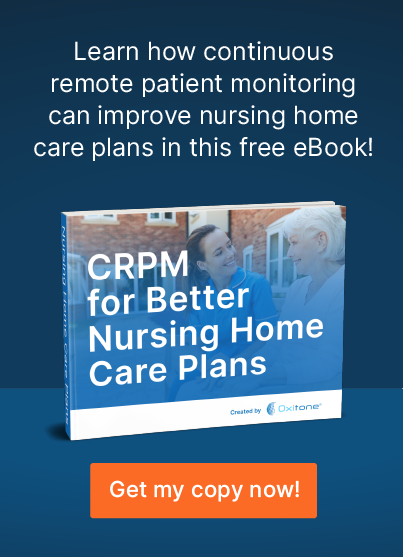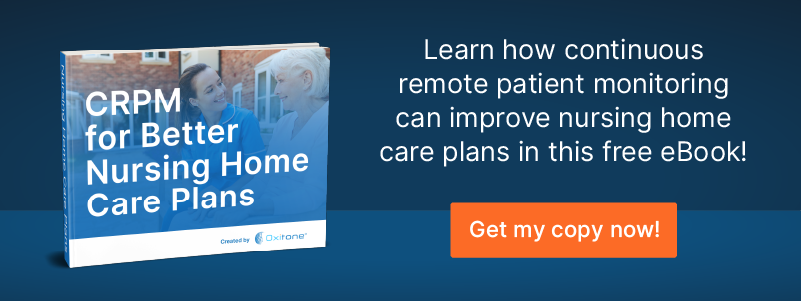The use of digital medical devices for patient home monitoring—or at least, in any location away from traditional health care facilities—has become commonplace in recent years. Most people are familiar with devices such as blood pressure monitors, thermometers, glucometers, and fingertip pulse oximeters.
More recently, patient home monitoring devices have been integrated into the paradigm of remote patient monitoring (RPM), in which episodic data from these devices is transmitted directly to healthcare providers in facilities or hospitals. The new generation of patient home monitoring devices that interface with smartphone applications can transmit patient data to the cloud, where it can be retrieved by healthcare providers.
Remote patient monitoring improves provider access to patient information, saves money, enhances patient lifestyles, and improves patient access to certain types of care. Overall, it has been of great benefit for patients and healthcare professionals. However, some drawbacks have arisen that diminish the potential and effectiveness of RPM.
Among these have been a lack of patient and provider “buy-in” due to inconsistencies in the availability and compatibility of some wearable devices and security concerns as they’re applied to patient care protocols. Some clinicians have also cited doubts that RPM can improve patient accountability and prompt higher-risk patients to moderate high-risk behavior.
Finally, the reliability and accuracy of certain wearable devices have come into question. A recent review in JAMA Dermatology showed that smartphone apps for melanoma detection have a 30% failure rate, and comparisons between various wearables showed large variations in accuracy between different devices, with error margins of up to 25%.
While these figures may appear discouraging at first blush, they’re anything but a guilty verdict regarding this technology. New medical wearable technologies invariably disrupt the paradigm of industry, and in healthcare, new technologies often take a bit longer to take hold due to the stakes involved—namely, the welfare of patients and the attendant legal exposure.
Given the needs of the healthcare industry (patients included) and the ongoing improvements in technology, a transformation from episodic, manual, and fragmented care to continuous, automated, and prolonged monitoring is now taking place. What’s being seen now is an incorporation of the predictive power of artificial intelligence combined with wearable medical technology, giving rise to real-time patient monitoring (continuous remote patient monitoring).
Real-Time, Real Benefits
More than 50% of hospital deaths occur in patients who are not continuously monitored. This is why intensive care units (ICUs) in hospitals employ continuous monitoring. Simply put, continuous full-time patient monitoring provides a remote analog to the ICU for high-risk, chronic patients. It is the next logical step in the evolution of remote patient monitoring and management.
The power of continuous remote patient monitoring lies in its ability to deliver detailed, accurate patient data in real time. Conventional remote patient monitoring has great benefits, but it provides episodic patient data rather than real-time patient data. Thus, it is of limited value when dealing with high-risk, chronic patients.
With full-time monitoring, wearable medical devices collect and transmit data as events occur, enabling reliable patient supervision and immediate responses to potential emergencies, whether this means an automatic (technical) intervention or the intervention of a health care provider.
In this new generation of patient monitoring, software employs predictive algorithms that detect even minor deviations from the established patient baseline. Medical intelligence algorithms immediately recognize even minute changes in that baseline and react accordingly. For example, health care providers can be instantly alerted with a smart, AI-aided alert that’s 100% free of false alerts generated using the primitive threshold-based approach.
In the case of high-risk, chronic patients, continuous patient monitoring offers:
- Improved patient quality of life
- Improved quality of care
- Reduced risk of medical crises
- The ability to avoid hospitalizations and ER visits
Real-time patient monitoring provides an early warning to clinicians regarding potential medical problems so they can intervene in a more timely manner—ideally, before an actual emergency arises. This type of system facilitates the early recognition of patient distress, which not only can lessen the severity of any complication but can also save lives when emergency situations do arise.
With real-time monitoring, the system continuously processes the patient’s digital biomarkers, while AI-powered, augmented medical intelligence software compares them to the patient’s baseline. With rapid-response systems in place, if the patient’s vital signs exceed accepted ranges, immediate alerts allow for prompt intervention. Vital sign trending (facilitated by medical intelligence software) expands on this by “learning” patient parameters and helping health care providers identify true alarms. This way, medical staff can reliably tell whether a patient is stabilizing or destabilizing and respond appropriately.
The new (and continually improving) smart wearable medical technologies allow comfortable and reliable continuous monitoring. Combining the convenience of wearable tracking devices with state-of-the-art technology, this paradigm offers capabilities previously available only in hospitals and clinics.
Remote Patient Monitoring vs. Continuous Remote Patient Monitoring (CRPM)
The transformation from conventional remote patient monitoring (RPM) to precisely evaluating patients’ health in real time is quickly becoming a reality.
It should be noted that the distinction between remote patient monitoring and full-time monitoring has not been sufficiently established outside of the industry. Thus, certain inaccuracies regarding the available information occasionally present themselves; i.e., there are a few reports, articles, and blogs that assert that RPM is real-time monitoring, when in fact, this is not the case. This is likely owing to the fact that these are still novel technologies, rather than an intention on anyone’s part to deceive.
In a hospital ICU, high-risk, chronic patients are continuously monitored. With continuous remote monitoring, these patients can benefit from similar technologies and provider access as ICU patients.
Patients with conditions such as congestive heart failure (CHF) for example, may be comfortable in most situations but often encounter physical limitations under stress. More severe symptoms can include an increased respiratory rate or even severe respiratory distress. Patients with CHF have been successfully managed by clinicians for decades, and many continue to live comfortably and productively.
In the past, these symptoms might have meant a trip to the emergency room or a weekend in the ICU. While this was an appropriate measure at the time, a recent study in the journal Critical Care Medicine estimated that hospitals could save $20,000 per bed annually with the help of remote continuous monitoring. According to the Commonwealth Fund, the top 5% of chronic patients account for 50% of annual care spending, which adds up to about $50,000 per patient.
By monitoring a CHF patient’s vital signs continually, clinicians can be alerted immediately regarding the early signs of worsening and help the patient take steps to avoid a clinical emergency. There is far less stress for the patient and far less expense than a trip to the hospital. There are numerous chronic conditions, including chronic obstructive pulmonary disease and obstructive sleep apnea, where millions of patients stand to derive benefits from continuous remote monitoring.
The Oxitone platform is a full-suite, FDA-cleared solution that is true continuous remote patient monitoring. In one click, clinicians can access patients’ real-time, intelligent insights and follow up on hundreds of high-risk patients with minimal effort. Oxitone features advanced, integrated SaaS, a physicians’ web portal and dashboards, secured cloud infrastructure, data analytics tools, reports, API integration tools, and data delivery on demand. Oxitone’s patient/caregiver app helps patients stay compliant with their care plan.
Specifically for the patient, Oxitone provides the Oxitone 1000M—the world’s first FDA-cleared wrist-sensor pulse oximetry monitor. This device is easy to use, supports Bluetooth, has a rechargeable long-life battery, and is CE Mark certified. The Oxitone 1000M multi-parameters monitor provides data on the patient’s skin temperature, pulse rate and HRV, blood oxygen, motion and activity, sleep patterns, and more.
The Oxitone platform is a powerful, full-suite solution that fully addresses the needs of chronic, high-risk patients, and its real-time delivery of data makes it a superior patient solution to remote patient monitoring. Oxitone’s combination of AI’s predictive power and the convenience of wearable medical technology represents the next major development in patient monitoring and chronic disease management.
Here at Oxitone, we boost value-based healthcare by delivering extraordinary patient, clinical, and economical outcomes at reduced medical utilization and cost. Patients need a prompt response to emergencies. Physicians need an easy and timely follow-up with patients. Our mission is to transform chronic disease management and help save lives worldwide.
Let’s save lives together! To see how we help remote patient monitoring companies and physicians improve the management and care of high-risk patients, contact us today!


